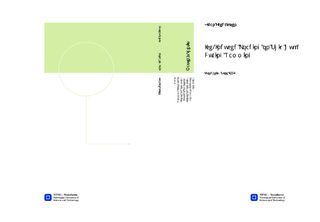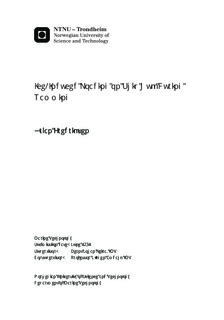| dc.description.abstract | As a result of the steadily increasing activities related to marine technology in Arctic regions, Det Norske Veritas has launched an ice load monitoring project to gather knowledge of the ice conditions and prevailing ice-induced actions in the region. The intention of the following thesis is to study different aspects related to design of ice-going vessels, in particular the design scenario where a vessel impacts an ice ridge.The introductory part of the thesis gives an overview of important aspects related to sea ice, including different types of ice features and their physical and mechanical properties. The microstructure of pure ice and formation mechanisms of sea ice are briefly described, and mechanical properties such as elasticity and compressive strength are discussed. Further, a study of existing models for estimation of ice-induced loading on ships is carried out, with focus on local hull plating pressure and global loading due to ice ridge impact.A comparative study of design rules developed by Det Norske Veritas and the International Association of Classification Societies is conducted, and important differences between the two separate rules are identified. The subdivision of class notations is described, and differences in definition of design loads and corresponding requirements are presented. A general conclusion is that the rules developed by Det Norske Veritas are more specific when it comes to governing design scenarios, while rules set forth by the International Association of Classification Societies are more universal in terms of vessel type and prevailing ice conditions.Two separate finite element models based on coastguard vessel KV Svalbard are developed, including a simplified beam element model and a detailed shell element model. Quasi-static and dynamic response analyses for ice ridge impact loading are carried out, where the duration of the load pulse is varied systematically from 0.25~s to 2.0~s. The simplified finite element model is seen to give larger overall maximum response compared with the detailed model, but the difference decreases as the pulse duration is increased.It is observed that quasi-static response is overall larger than dynamic response for both finite element models within the defined pulse duration range. However, the ratio of maximum dynamic to maximum quasi-static response is seen to be positively correlated with the load pulse duration, and a close-to-linear relationship is observed.A study of different parameter variations is performed in order to investigate the importance of various pulse shapes, mass models, damping models and solution methods. Variations are only performed using the simplified beam model. It can be concluded that the shape of the load pulse is of minor importance for dynamic response when the pulse duration is short. However, the pulse shape becomes increasingly important for longer load pulses.An opposite trend is observed when varying the mass model, where a negligible difference in dynamic response is seen for longer load pulses. The difference increases somewhat for shorter load pulses, but can be considered unimportant for dynamic response within the investigated duration interval.It is further observed that the choice of damping model is of significant importance compared with other investigated parameters, and the difference in predicted response remains constant within the investigated pulse duration interval. The choice of solution method is however unimportant for analysis using the simplified beam model.In order to verify the applicability of the finite element models, full scale sea trial measurements of global motions from KV Svalbard are analysed and compared with finite element results. Difference between measured and calculated response during ice ridge impact is seen to be significant, where the calculated maximum response is close to 4 times larger than the maximum measured response. Iterative modifications of the load pulse shape are performed in order to reproduce the measured response history following ice ridge impact, and quite strong agreement is obtained between measured and calculated response. | nb_NO |

